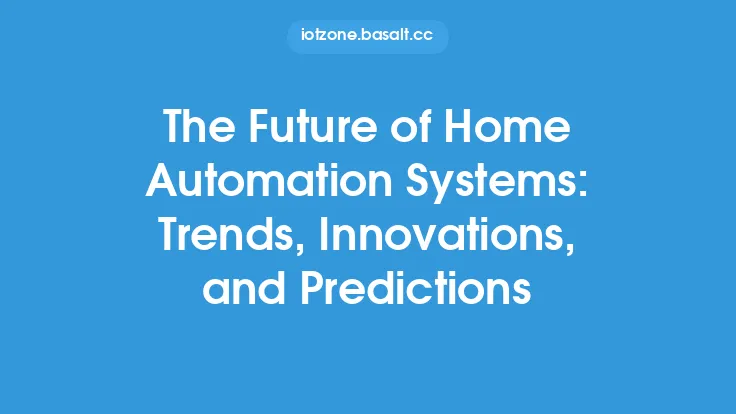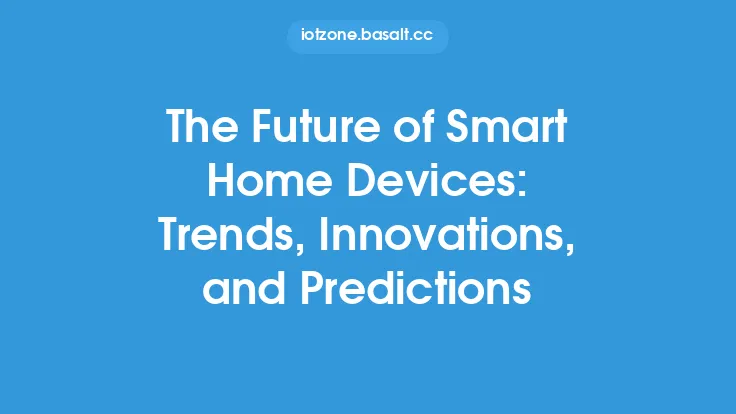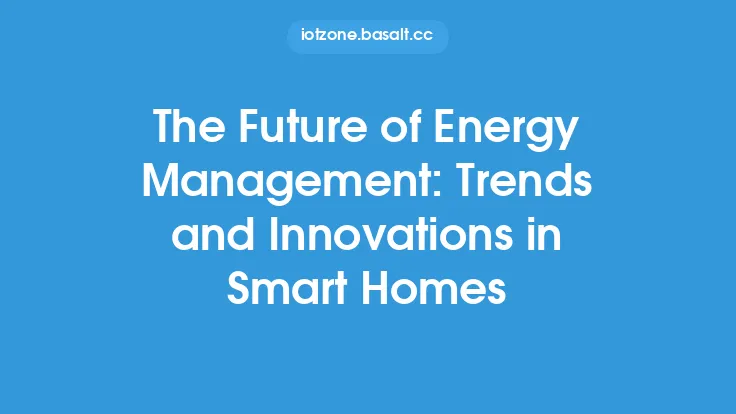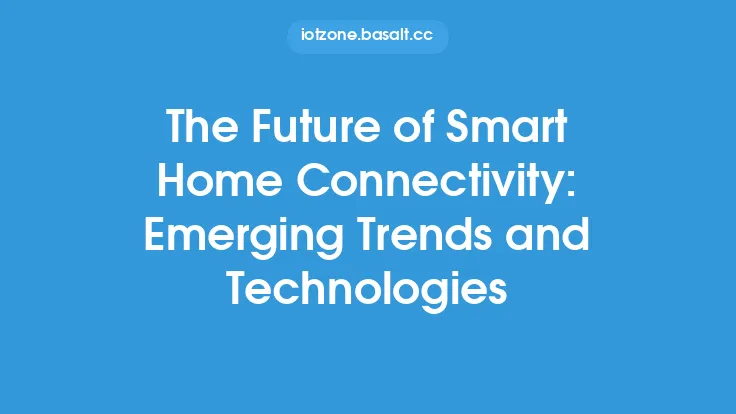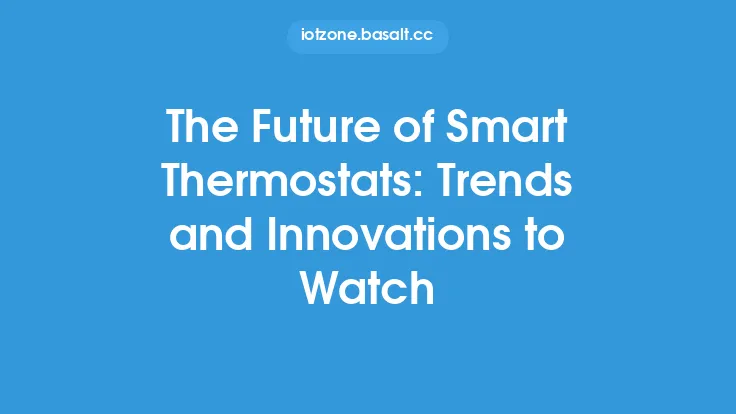The world of smart home automation is rapidly evolving, and voice assistants are at the forefront of this revolution. As technology advances, voice assistants are becoming increasingly sophisticated, enabling seamless control and interaction with various smart devices in the home. In this article, we will delve into the future of voice assistants in smart home automation, exploring the trends and innovations that are shaping the industry.
Introduction to Voice Assistants in Smart Home Automation
Voice assistants, such as Amazon Alexa, Google Assistant, and Apple Siri, have become an integral part of smart home automation. These virtual assistants use natural language processing (NLP) and machine learning algorithms to understand voice commands and control various smart devices, including lights, thermostats, security cameras, and door locks. The integration of voice assistants with smart devices has made it possible for homeowners to control their living spaces with ease, using simple voice commands.
Trends in Voice Assistants for Smart Home Automation
Several trends are driving the growth of voice assistants in smart home automation. One of the primary trends is the increasing adoption of smart speakers, such as Amazon Echo and Google Home, which have become the hub of smart home automation. These speakers are equipped with voice assistants that can control various smart devices, making it easy for homeowners to manage their living spaces. Another trend is the integration of voice assistants with other smart devices, such as TVs, refrigerators, and washing machines, which is expanding the scope of smart home automation.
Innovations in Voice Assistants for Smart Home Automation
Several innovations are transforming the voice assistant landscape in smart home automation. One of the significant innovations is the development of multi-room audio systems, which enable homeowners to control music playback in multiple rooms using voice commands. Another innovation is the integration of voice assistants with home security systems, enabling homeowners to receive alerts and notifications on their smartphones or tablets. The use of artificial intelligence (AI) and machine learning algorithms is also improving the accuracy and efficiency of voice assistants, enabling them to learn the preferences and habits of homeowners and make personalized recommendations.
Technical Advancements in Voice Assistants
From a technical perspective, voice assistants rely on several technologies to function effectively. One of the key technologies is NLP, which enables voice assistants to understand voice commands and convert them into machine-readable code. Another technology is speech recognition, which enables voice assistants to recognize spoken words and phrases. The use of cloud computing and internet of things (IoT) protocols, such as Zigbee and Z-Wave, is also enabling voice assistants to communicate with various smart devices and control them seamlessly.
Integration with Other Smart Home Technologies
Voice assistants are also being integrated with other smart home technologies, such as home automation hubs and smart home security systems. This integration is enabling homeowners to control their living spaces more efficiently, using a single interface or voice commands. The use of IoT protocols and cloud computing is also enabling voice assistants to communicate with various smart devices, making it possible for homeowners to control their homes remotely using their smartphones or tablets.
Future of Voice Assistants in Smart Home Automation
The future of voice assistants in smart home automation is promising, with several innovations and trends on the horizon. One of the significant developments is the integration of voice assistants with augmented reality (AR) and virtual reality (VR) technologies, which will enable homeowners to control their living spaces in a more immersive and interactive way. Another development is the use of edge computing, which will enable voice assistants to process voice commands locally, reducing latency and improving response times.
Challenges and Limitations
Despite the advancements in voice assistants, there are several challenges and limitations that need to be addressed. One of the primary challenges is the issue of compatibility, with different voice assistants and smart devices using different protocols and standards. Another challenge is the issue of security, with voice assistants and smart devices being vulnerable to hacking and cyber attacks. The use of AI and machine learning algorithms is also raising concerns about data privacy and the potential for bias in decision-making.
Conclusion
In conclusion, the future of voice assistants in smart home automation is exciting and promising, with several trends and innovations driving growth and adoption. As technology advances, voice assistants will become increasingly sophisticated, enabling seamless control and interaction with various smart devices in the home. However, there are also challenges and limitations that need to be addressed, such as compatibility, security, and data privacy. By understanding these trends and innovations, homeowners and manufacturers can work together to create a more seamless and efficient smart home automation experience.
